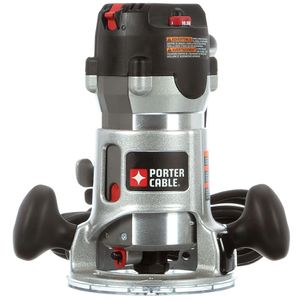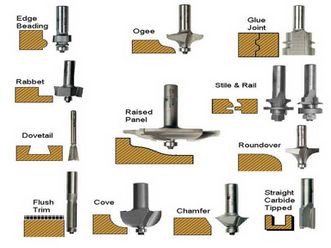Difference between revisions of "Hand Router"
| Line 17: | Line 17: | ||
[[{{#show: {{FULLPAGENAME}}|?Has icon|link=none}}|100px|left|top|{{#show: {{FULLPAGENAME}}|?Has icondesc}}]] | [[{{#show: {{FULLPAGENAME}}|?Has icon|link=none}}|100px|left|top|{{#show: {{FULLPAGENAME}}|?Has icondesc}}]] | ||
[[{{#show: {{FULLPAGENAME}}|?Has image|link=none}}|300px|thumb|upright=1.5|{{#show: {{FULLPAGENAME}}|?Has imagedesc}}]] | [[{{#show: {{FULLPAGENAME}}|?Has image|link=none}}|300px|thumb|upright=1.5|{{#show: {{FULLPAGENAME}}|?Has imagedesc}}]] | ||
| − | |||
| − | |||
| − | |||
| − | |||
| − | |||
| − | |||
| − | |||
| − | |||
| − | |||
| − | |||
| − | |||
| − | |||
| − | |||
| − | |||
| − | |||
| − | |||
| − | |||
| − | |||
| − | |||
| − | |||
Make: {{#show: {{PAGENAME}} |?Has make}} | Make: {{#show: {{PAGENAME}} |?Has make}} | ||
| Line 48: | Line 28: | ||
==Description== | ==Description== | ||
| − | + | The hand router is the most dangerous tool in the wood shop, but it can also be one of the most versatile tools. Used in conjunction with the proper jigs and templates, the router can accomplish a wide variety of tasks with relative ease. Holes and channels of varying depths and nearly limitless shapes can be cut. The router can also use special bits to cut bevels and chamfers along the edges of a workpiece. | |
Here is an example of this piece of equipment being used. | Here is an example of this piece of equipment being used. | ||
| − | + | [https://www.youtube.com/watch?v=8Vl8Jbw3cSk Introductory Video] | |
| + | |||
| + | [https://www.youtube.com/watch?v=5Qqimqo-ohU About Direction of Cut] | ||
==Documentation== | ==Documentation== | ||
| Line 58: | Line 40: | ||
====Terminology==== | ====Terminology==== | ||
| − | + | [[Image:RouterBits.jpg|331x331px|left]] | |
| + | Each bit is made for a different job. The wood shop has a wide assortment, although less common types may be unavailable. It should be noted that different bit sizes and profiles will operate better at different speeds. The amount of material the is being removed in each pass as well as the hardness of the wood should determine the speed the router is ran at. With reference to straight bits, if the bit is less than 1" in diameter, many recommend speeds near 24,000 rpm. For bits 1" - 2.5", 16,000 to 18,000 rpm, 2.5" to 3", 12,000 to 14,000 rpm, and for bits of more than 3", a common recommendation is 10,000 to 12,000 rpm. | ||
| + | |||
| + | Occasionally routing can leave burn marks on the workpiece. This usually means that the bit in the router has become dull, let a shop supervisor know if a bit seems dull. Sometimes the burning is due to build up of resin and other gunk (a technical term) on the back of the blade insulating the bit and allowing for heat to build up, make sure to keep bits clean. A final possible cause of burning wood while routing is taking passes that are too slow or setting the router bit speed too high. | ||
| − | User Manual | + | [[:File:HandRouterManual890 series.pdf|User Manual]] |
==Training== | ==Training== | ||
Revision as of 21:18, 12 August 2019
Make: Porter Cable
Model: 8902
Ace: Needed (Makerhub@georgefox.edu).
Location: Wood Shop
Description
The hand router is the most dangerous tool in the wood shop, but it can also be one of the most versatile tools. Used in conjunction with the proper jigs and templates, the router can accomplish a wide variety of tasks with relative ease. Holes and channels of varying depths and nearly limitless shapes can be cut. The router can also use special bits to cut bevels and chamfers along the edges of a workpiece.
Here is an example of this piece of equipment being used.
Documentation
Terminology
Each bit is made for a different job. The wood shop has a wide assortment, although less common types may be unavailable. It should be noted that different bit sizes and profiles will operate better at different speeds. The amount of material the is being removed in each pass as well as the hardness of the wood should determine the speed the router is ran at. With reference to straight bits, if the bit is less than 1" in diameter, many recommend speeds near 24,000 rpm. For bits 1" - 2.5", 16,000 to 18,000 rpm, 2.5" to 3", 12,000 to 14,000 rpm, and for bits of more than 3", a common recommendation is 10,000 to 12,000 rpm.
Occasionally routing can leave burn marks on the workpiece. This usually means that the bit in the router has become dull, let a shop supervisor know if a bit seems dull. Sometimes the burning is due to build up of resin and other gunk (a technical term) on the back of the blade insulating the bit and allowing for heat to build up, make sure to keep bits clean. A final possible cause of burning wood while routing is taking passes that are too slow or setting the router bit speed too high.
Training
Overview
Insert Text
Demonstration
Insert text
General Procedure
Insert text
Safety
Insert text
Certification
Foxtale Quiz
Troubleshooting
Maintenance
General maintenance
Insert text
Specific Maintenance Tasks
| Maintenance Procedure | Frequency | Done By |
|---|---|---|
| Sample | Sample | Sample |


